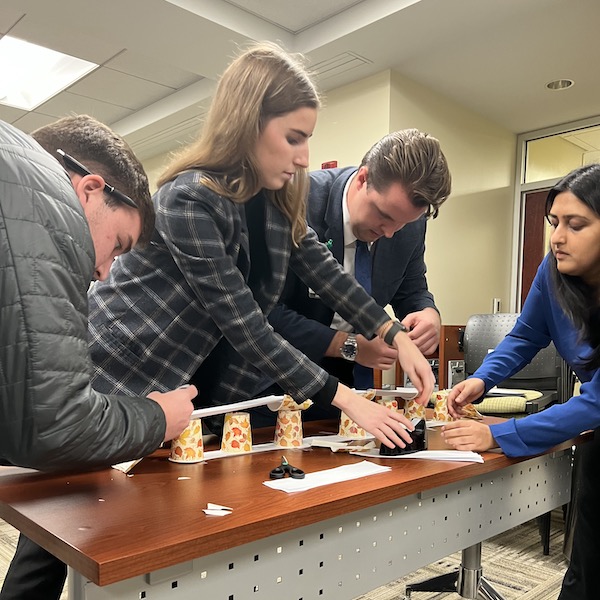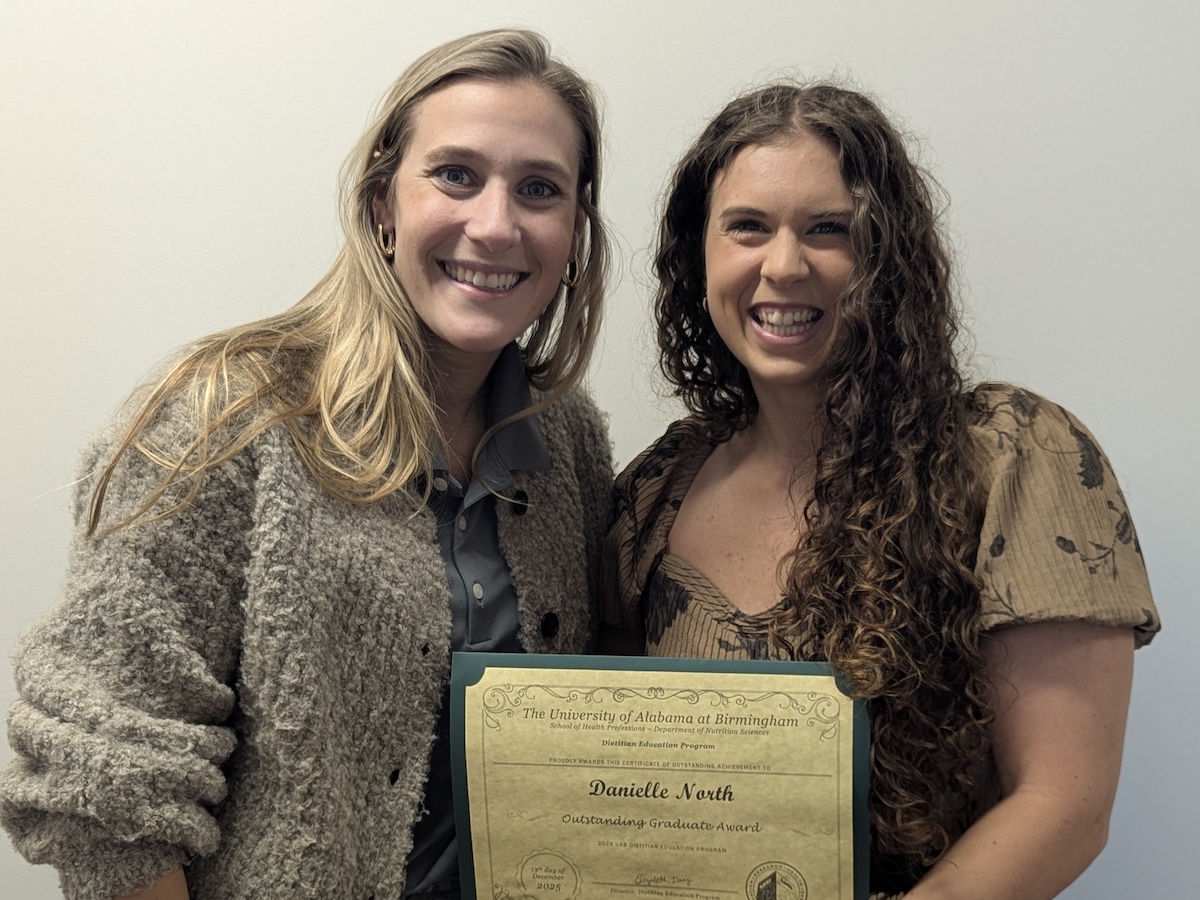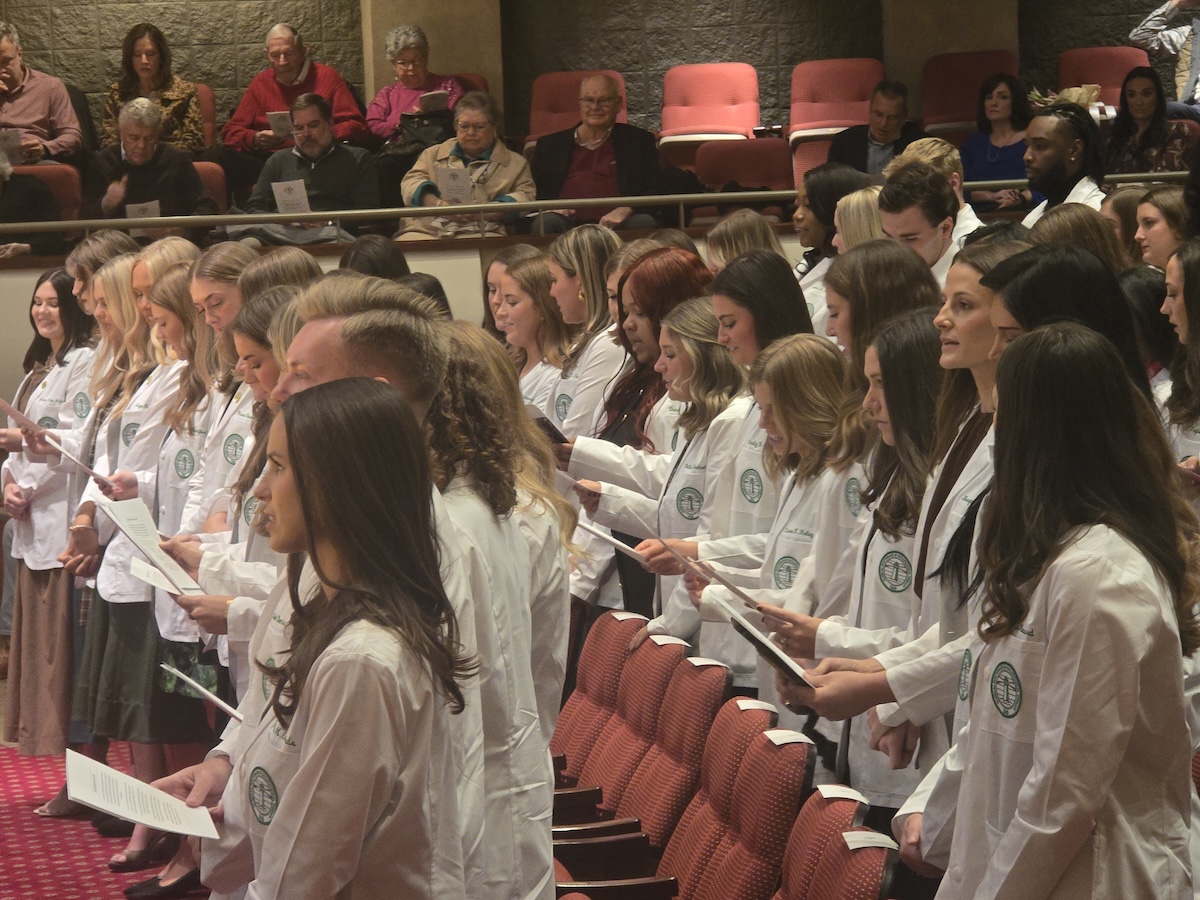Written by Rylan Gray
What can future CEOs learn from building a bridge with paper, tape, and paper cups? Quite a lot according to Nancy Borkowski, DBA, distinguished professor at the University of Alabama at Birmingham School of Health Professions.
Students in the M.S. in Health Administration program came to their “HA 631: Organization Theory and Behavior” class, to an assigned team project to build a paper-based bridge that would successfully hold a small car going from end to the other without collapsing or the car falling off.
“When the students go into the project, they can’t bring any tools with them, they can’t bring their phone to figure out how to do it, it’s only because they build off of each other’s strengths that they’re able to come up with a concept,” said Borkowski.
Upon receiving instructions, the students were required to appoint management and build a chain of command to get the job done. The hierarchy consists of multiple regions with one general manager, while each region has their own assistant general manager. Some groups are required to build a 3-foot bridge while the other groups are required to build a 9-foot bridge.
Limited Resources
 The students were only allowed three resources:
The students were only allowed three resources:
- Paper
- Paper cups
- Scissors and tape
Scissors and tape only count as one resource because they had to be used at the same time and each group was only allowed two minutes to execute their quickly planned design. They were not allowed to precut the tape or store the scissors outside of the allocated time.
The constraints of the project are intended to make the students see just how difficult it is to execute a goal with limited resources and time, along with the importance of communication. These lessons coincide with managing a hospital or health facility where you may only have one piece of equipment that is needed by many patients.
“There are so many different sectors within healthcare, whether in a in a hospital or rehab center, there are so many departments and having to rely on each other to somehow do your job each day and really develop our mission and see that mission through really corresponds with what we’ll be doing in our field,” says Jonathan Owsley, student, MSHA Class 59.
Unlimited Lessons
After the simulation is over, they conduct a group debriefing to discuss the project, the obstacles they faced, and the takeaway lessons.
Borkowski says the students get a great understanding for the importance of the project and how it translates to positions the students will find themselves in throughout their professional careers.
The students found the biggest challenge of the project was not being able to communicate directly to their general manager and having to rely on their assistant manager to properly communicate their needs as a team.
They found the biggest reward in the hands-on activities Borkowski offers throughout the semester, as opposed to the normal grind of a stereotypical class.
“I don’t mind writing a paper but doing a project to see how things actually works seems to be really beneficial,” says Dylan Angeline, student, MSHA Class 59.
The UAB M.S. in Health Administration program is ranked as the #1 health care management graduate program in the nation in the latest rankings from U.S. News & World Report. It is the highest ranked program at the University of Alabama at Birmingham.

